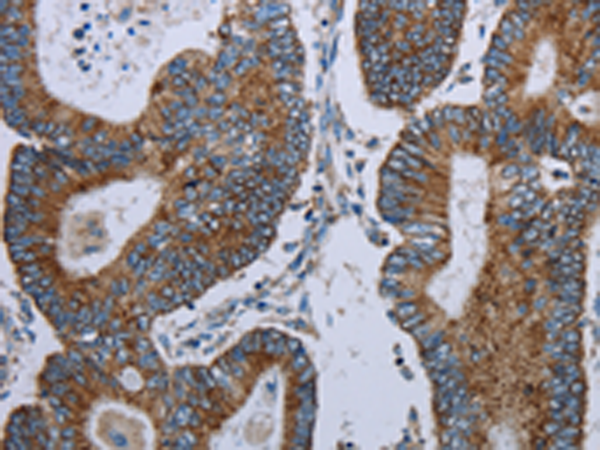


| WB | 咨询技术 | Human,Mouse,Rat |
| IF | 咨询技术 | Human,Mouse,Rat |
| IHC | 1/25-1/100 | Human,Mouse,Rat |
| ICC | 技术咨询 | Human,Mouse,Rat |
| FCM | 咨询技术 | Human,Mouse,Rat |
| Elisa | 1/1000-1/2000 | Human,Mouse,Rat |
| Aliases | HUC; HUCL; PLE21 |
| WB Predicted band size | 40 kDa |
| Host/Isotype | Rabbit IgG |
| Antibody Type | Primary antibody |
| Storage | Store at 4°C short term. Aliquot and store at -20°C long term. Avoid freeze/thaw cycles. |
| Species Reactivity | Human, Mouse |
| Immunogen | Synthetic peptide of human ELAVL3 |
| Formulation | Purified antibody in PBS with 0.05% sodium azide and 50% glycerol. |
+ +
以下是关于ELAVL3抗体的3篇参考文献摘要整理:
1. **"ELAVL3 expression in the cerebellar cortex during postnatal development"**
- **作者**: Pascale A, et al.
- **摘要**: 该研究通过免疫组化分析ELAVL3蛋白在小鼠小脑发育不同阶段的表达模式,发现其特异性表达于颗粒神经元前体细胞,提示其在神经分化中的调控作用。研究使用特异性ELAVL3抗体进行组织定位。
2. **"HuD/ELAVL3 as a biomarker for neuroblastoma progression"**
- **作者**: Lee KH, et al.
- **摘要**: 探讨ELAVL3(HuD)在神经母细胞瘤中的表达与临床预后的关联。通过Western blot和免疫荧光(使用ELAVL3单克隆抗体)发现其高表达与肿瘤侵袭性呈正相关,可能作为治疗靶点。
3. **"RNA-binding protein ELAVL3 maintains neuronal integrity in the adult brain"**
- **作者**: Toba H, et al.
- **摘要**: 利用条件性敲除小鼠模型结合ELAVL3抗体进行蛋白检测,揭示ELAVL3通过稳定突触相关mRNA维持神经元功能,其缺失导致认知行为异常,强调了其在神经退行性疾病中的潜在意义。
注:若需具体文献年份或期刊,建议通过PubMed/Google Scholar以“ELAVL3 antibody”、“HuD antibody”等关键词进一步筛选。
The ELAVL3 antibody targets the Embryonic Lethal, Abnormal Vision-like 3 (ELAVL3) protein, a member of the ELAVL/Hu family of RNA-binding proteins. ELAVL3. also known as HuC, is primarily expressed in neurons and plays a critical role in post-transcriptional regulation by stabilizing and modulating the translation of target mRNAs, particularly those involved in neuronal differentiation, synaptic plasticity, and cell survival. It contains three RNA recognition motifs (RRMs) that bind AU-rich elements in mRNA 3'UTRs, influencing stability and protein synthesis under physiological or stress conditions.
ELAVL3 is predominantly found in the central and peripheral nervous systems, with its expression tightly linked to mature neurons, making it a marker for neuronal development and function. Dysregulation of ELAVL3 has been associated with neurological disorders, including epilepsy, neurodegeneration, and neurodevelopmental conditions, as well as cancers like neuroblastoma.
Antibodies against ELAVL3 are widely used in research to study its expression patterns, subcellular localization, and interactions via techniques such as Western blotting, immunohistochemistry, and immunoprecipitation. Specificity validation, including knockout controls, is essential due to structural similarities with other ELAVL family members (e.g., HuR, HuB). These tools help elucidate ELAVL3's role in neural maintenance and disease mechanisms, offering insights into therapeutic targeting.
×